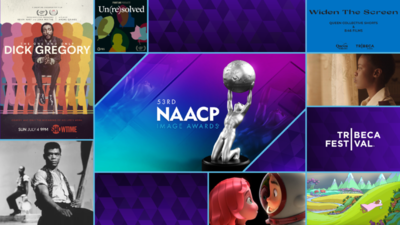
BY ZACHARY WIGON |
Racking Focus: Does 'Nymphomaniac' Suggest a New Distribution Scheme?
What 'Nymphomaniac' indicates might be a future type of storytelling.

Buzz is starting to heat up for Lars Von Trier's new feature, Nymphomaniac, with a number of clips being carefully released in anticipation of the film's December 25 bow. While the film looks sure to fascinate - as Von Trier's work always does - it's not that film itself but one quirky aspect of its inception that is of interest in this column. Von Trier decided to go a difficult road with Nymphomaniac, choosing to incorporate unsimulated sex scenes into the film, the better to honestly portray the erotic life of a woman whose sexual experiences are the focus of the film.
Von Trier originally planned to distribute two versions of the picture, one with the unsimulated sex, a second without it; audiences could have their pick.
Of course, there was a snag here - how to ensure the film could be seen by a wide enough audiences for investors to recoup, when unsimulated sex means many theaters won't take the film? Von Trier originally planned to distribute two versions of the picture, one with the unsimulated sex, a second without it; audiences could have their pick. That idea has been scrapped: Nymphomaniac will now only be released with the unsimulated sex scenes in it. The idea of distributing two different versions of the film, however, lingers.
In a moment where TV networks are trying to incorporate relevant second-screen materials so that viewers will watch peripheral series content on their tablets or laptops while watching the actual shows on TV, one could see an interesting possibility opening up for studios to do something similar with alternate versions of films. DVDs gave studios the opportunity to partially monetize directors' cuts of films and alternate endings, but often, in the case of the latter, one wonders how much an alternate ending as a bonus feature really enhances revenue.
This idea is something else entirely: what about releasing two different versions of a film theatrically at the same time, with different endings? Or, utilizing second-screen technology, what about releasing one version in theaters only, and the alternate version as a VOD-only option? After all, VOD is a far less costly distribution mechanism, so in the event that a studio and a helmer differed significantly with respect to the ending or the cut of the film, the studio might release their version theatrically but give the director's version a shot on VOD; it could be an interesting way to see how the differing storytelling approaches shake out.
The idea of differing versions of works doesn't necessarily have to be limited to alternate endings of cuts; one can envision a further future, exciting or, perhaps, dystopian, where films are uniquely adjusted to each individual viewer based on the viewer's established taste. (Sort of like how Google tailors ads directly toward your "interests".)
While this sort of distribution scheme would mean a real loss of the communal aspect of filmgoing (as everyone would be seeing different versions of the same film), I think we can rest assured in the belief that such a thing is rather far off. However, what is exciting and certainly available to us now is a distribution network of many channels that allows for multiple versions of a film to be presented simultaneously. Studios and directors have often warred back and forth on whose take on the material is most effective; this might be a great way to put those disputes to the test.

